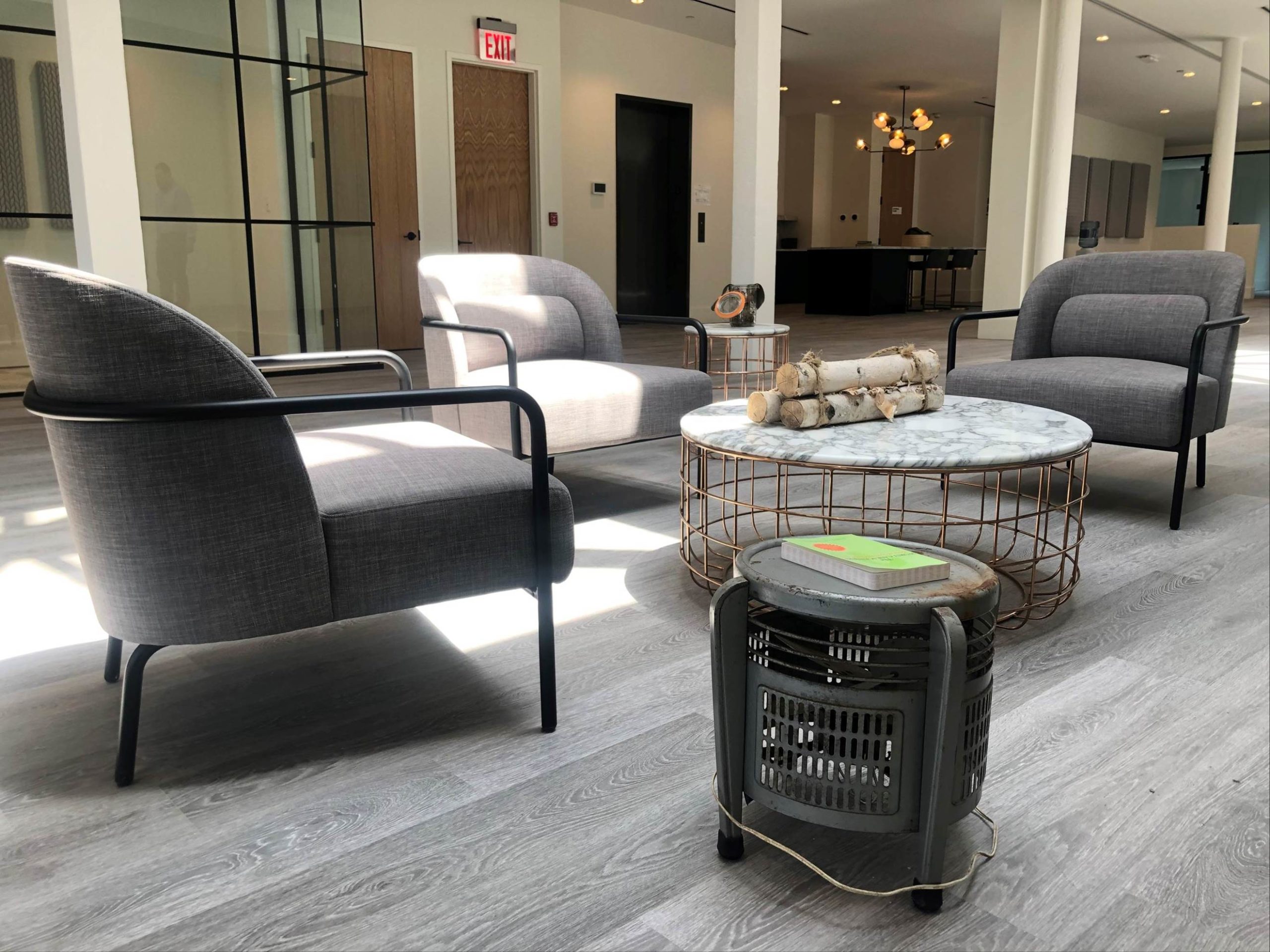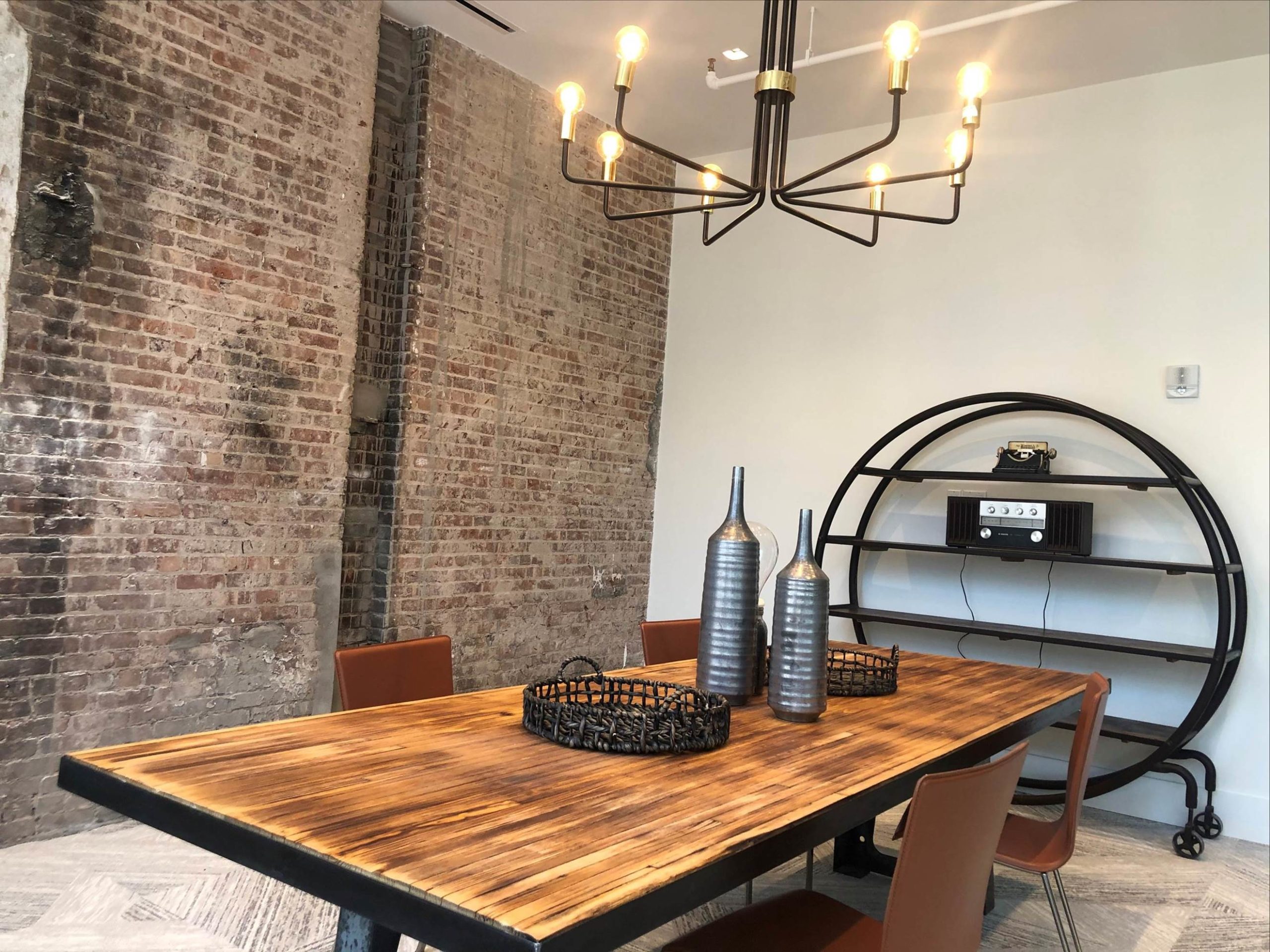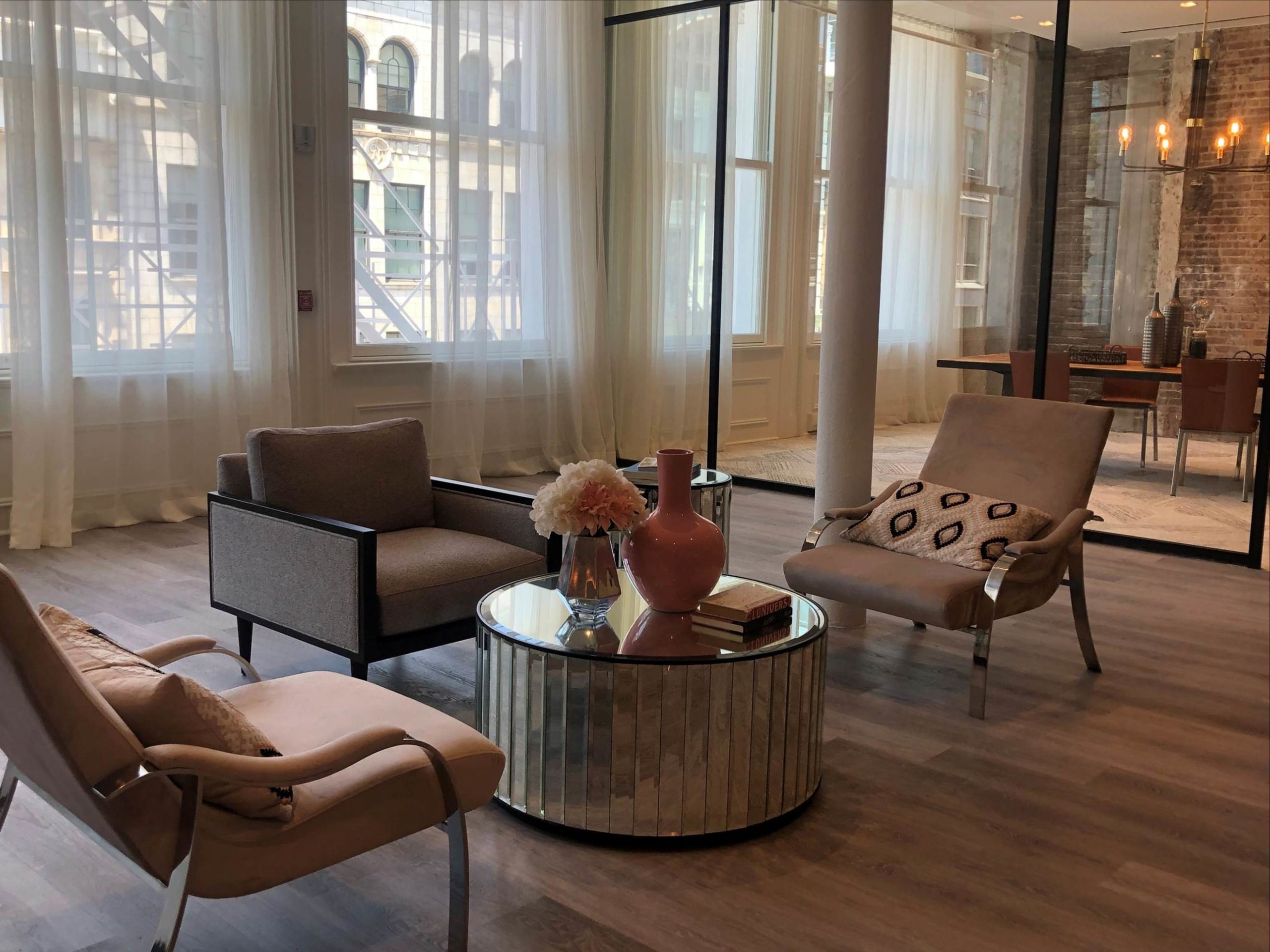In New York’s Battered Office Market, KPG Bets on Boutique Conversions
Firm Buys Aging Lower-Tier Properties in Hopes of Turning a Profit

By Andria Cheng, CoStar News (June 1st, 2021) – At L’Atelier at 446 Broadway in New York’s SoHo neighborhood, prospective tenants can enter the five-story building with their smartphones once they’re several feet from the door. Upon entering, the newly built elevator automatically opens to take them to the floors they set up via an app, with no need to touch a button.
Inside, a 1950s fan turned into a table and an antique jukebox mixed in with locally sourced artisan furniture and decor pieces give off a vibe of walking into a high-end boutique hotel or a luxury bespoke home instead of an office.

An antique fan doubles as a table as part of 446 Broadway’s bespoke design flair. (Andria Cheng/CoStar)
That combination of signature design and tech flair, found in a 1915 building located between Grand and Howard streets, is part of what New York-based KPG Funds described as the secret sauce behind its investment thesis: buy “architecturally significant” but aging Class B and C properties and convert them to modern Class A properties, eventually selling them at a premium.
The strategy isn’t without challenges as landlords of all kinds are competing for tenants against record-high vacancies in the city. The first-quarter availability rate in SoHo ranked highest among various Manhattan submarkets, according to a report from real estate firm Savills.
We are filling a “high-end niche void that’s missing in the market,” Greg Kraut, co-founder and CEO of KPG, said in an interview. “We purchase boutique office properties in supply-constrained areas. We go to areas where there’s still a lot of demand for office product [but] not a lot of institutional players. We want to put institutional overlay to the middle market.”
Kraut, who was a broker for over 20 years in New York before founding the firm with his partner in 2014, said many of the buildings KPG sets its sights on are often family-owned, off the market, “underleveraged and underfunded,” and “have been in disarray for a while.”
He added that “each one of the buildings has a story behind it. It takes a lot of hand-holding” with the families and others that own these properties, he told CoStar News. “It takes a long time for us to get these [projects] done. We restore every last detail.”

KPG Funds bought 446 Broadway in 2018, and the building has since undergone a major makeover. (Andria Cheng/CoStar)
Since the real estate investment firm bought 446 Broadway in 2018, the building has gone through a major makeover to also include a new staircase, new windows, new fire escapes and three skylights on the top floor and a roof deck. Kraut, who personally shops for some of the artwork and antique pieces in the properties, said KPG handles all the “design aesthetics” development in-house.
The top floor, with a 14-foot ceiling height and nearly 7,500 rentable square feet, has a pending lease at an asking rent of $120 per square foot, he said. Per-square-foot asking rent from the second to fourth floors, with about the same rentable square footage, goes from $105 to $115, he said. Since the building was recently opened for tours, it had at least 25 showings the past two weeks, Kraut told CoStar. There’s also a total of more than 10,000 square feet of retail space on the ground and lower levels.
With the remote-working trend leading to what CoStar data shows as New York’s record-high office vacancies of 11.5%, those leasing rates marked a premium.
First-quarter asking rents in Manhattan declined for a fifth consecutive quarter, by 9.1% from a year earlier, to $76.27 per square foot, the Savills report said. The SoHo area, with Manhattan’s highest submarket availability rate of 27%, averaged slightly higher at $79.42 in the first quarter. In contrast, the report showed Class A properties’ asking rent in the city fared better at $88.
“A lot of people say they want plug-and-play space that’s tech-advanced,” Kraut said. “They want space that looks nice but is also functional. … High-end boutique buildings, it’s one area that’s held the value. We’ve been able to weather the storm pretty well. We haven’t seen any kind of rental rate degradation on our platform.”
KPG, which has bought $250 million of properties in Manhattan, recently unveiled a $1 billion fund to buy more buildings with up to 150,000 square feet over the next two to three years, he said.

KPG Funds has an in-house design team to adorn its acquired buildings. (Andria Cheng/CoStar)
“We are actively looking to buy as much good product in areas that we know well and are going to outperform,” he said. “The price of office buildings isn’t commiserate with the leasing activity we see. It comes down to buy low and sell high. … Our investors are confident in our thesis for middle-market boutique [offices] in New York. When you treat middle-market tenants the right way, they typically don’t leave.”
In a declining rental market, renovations are expected to help retain and attract tenants and protect landlords from leasing risk — which is becoming a key factor for investors, according to a report from real estate firm JLL.
In the Midtown South area, which includes SoHo, Chelsea and the Meatpacking District, only about 12% of office buildings below 100,000 square feet have been revamped in the past 30 years, in line with the Manhattan average of 11%, according to CoStar data.
“Buildings that have been recently built or renovated are going to do better,” said Victor Rodriguez, CoStar’s director of market analytics in New York. KPG’s “logic makes sense, but there are limitations here. You have to find the right tenant,” he said, comparing smaller buildings to big office towers.
Newmark’s David Malawer, who represents KPG on the building as an exclusive agent, said there’s been a lot of interest in the building from prospective tenants in the fashion industry, financial services and tech.
“You are taking an old building and give it a new life,” Malawer, whose involvement with KPG starts as early as when Kraut goes shopping for buildings, told CoStar. To attract modern-day office tenants, “the key is to make it look like a hotel and residential. Most tenants want to move in and not deal with [renovations.] We are making the product.”